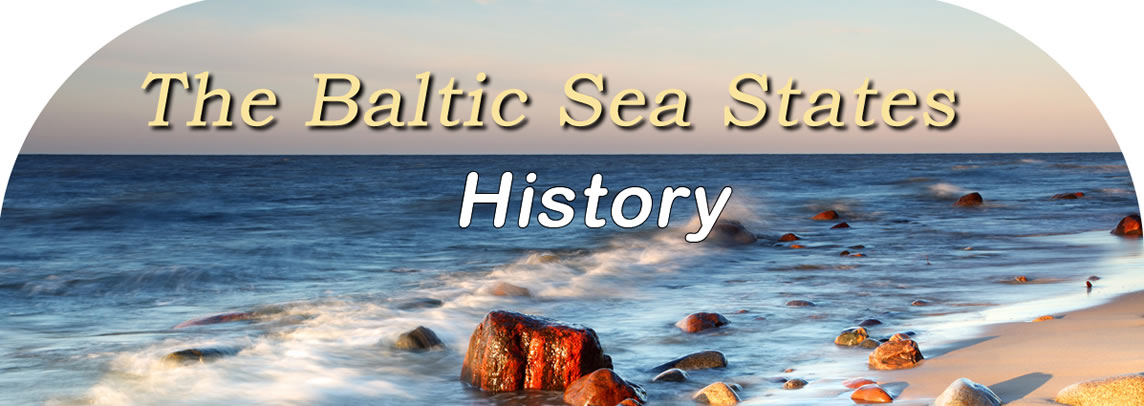
Lithuanian History Lithuania has a long and colorful history, located in northern Europe and surrounded by Latvia, Belarus, Poland and Russia. The original settlers in the country were Indo-Eropean Balts with the name Lithuania being mentioned for the first time in an account of the mission of St. Bruno. Through the Middle Ages, Lithuania was accepted on world maps, and on July 6, 1253, Mindaugas, was named ruler of the country. Christianity was officially adopted in Lithuania in 1387. First Written Constitution At the end of the 18th century, on May 3, 1791, Lithuania adopted their first written constitution, giving them the first constitution in Europe, and the second in the world. Education was important in Lithuania with the founding of Vinius University in 1579, making it the oldest university in Eastern Europe. During the 19th century, tsarist Russia began to impose the Russian Orthodox faith, suppressing those who worshiped in the Catholic Church. As a result, book smuggling emerged as resistance fighting against tsarist repression. The majority of the book smugglers were peasants, but they became a symbol for a national movement to preserve the history and national identity of Lithuania. Prosperous Times On February 16, 1918, 20 representatives of the Lithuanian nation signed the Act of Independence of Lithuania after fighting for their independence from Bolshevik and Polish invaders. In 1920, Lithuania established a parliamentary democracy at the Constituent Assembly. However, the council was unable to form a government, develop a police force or create state institutions as German troops still existed in the country. The Germans attempted to incorporate Lithuania into the German Empire, hoping to unite the country with Prussia, which Lithuania resisted. On June 4, 1918, the country offered Wilhelm 2nd Duke of Urach the Lithuanian throne, and he accepted, taking the name Mindaugas II. The new ruler never visited Lithuania, however, and he was removed from the throne on November 2, 1918. After World War I After Germany lost World War I, Lithuania quickly formed their first government, led by Augustinas Voldemaras, who eventually served as the first Prime Minister of Lithuania. Germany withdrew, but Soviet forces began to expand, reaching the Lithuanian borders in December 1918, and the capital of the country, Vilnius, was captured by the Soviet army on January 5, 1919 due to the fact that the Lithuanian Army had not had time to form adequately to defend itself. However, led by General Silvestras Zukauskas, the Lithuanian army eventually pushed the Soviets out of Lithuanian territory by the end of 1919. On July 12, 1920, the Soviet-Lithuanian Peace Treaty was signed, giving Lithuania it’s independence. Despite the treaty, the Soviets and Lithuanians continued to battle until a final constitution was signed in August 1922. After World War II As Germany made rapid advances
against Denmark and Norway in 1940, the Soviets strengthened
pressure on Lithuania, eventually leading to the Soviet Ultimatium
to Lithuania in June of 1940. This ultimatum demanded that Lithuania
form a pro-Soviet government and admit Russian troops. Lithuania,
which was already under partial Soviet control was unable to resist,
accepting the ultimatum, and Soviet troops crossed the border on
June 15, 1940. The Soviets began nationalizing land in Lithuania,
increased agriculture taxes in an effort to bankrupt farmers, and
nationalized all banks, large industries and real estate. All
religious, cultural and political organizations were forbidden
except the Communist Party of Lithuania. In June 1941, German forces
invaded Lithuania, and within a week, controlled the government.
Retreating Soviet forces murdered Lithuanian political prisoners.
Under German rule, estimates are that 190,000 of the between 210,000
and 250,000 Jews living in Lithuania were murdered during the
Holocaust, with executions beginning immediately after German
occupation. In January 1945, the Soviet Union once again captured
Lithuania, and the country remained under Soviet rule until 1990,
with the fall of the Soviet Union. Lithuania was the first country
to declare independence, and Vytautas Landsbergis became the Head of
State. © Baltic21.org 2013, All Rights Reserved |
